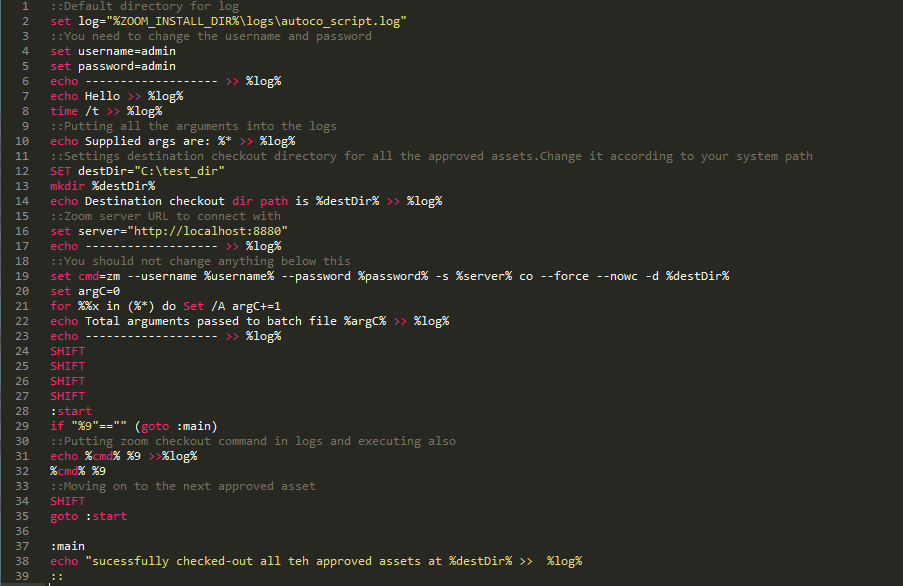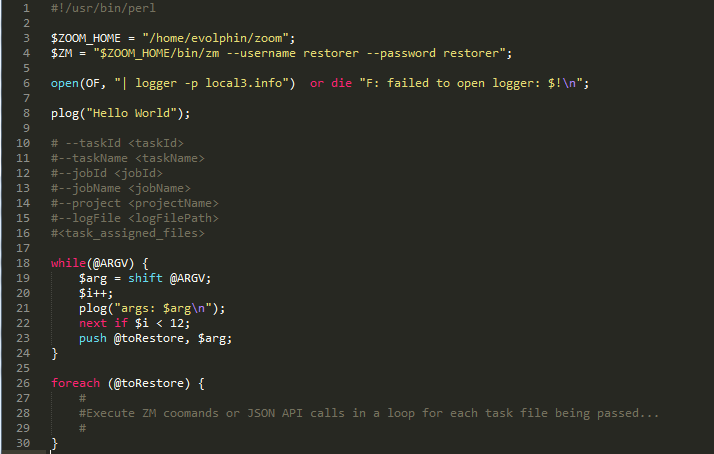Zoom Workflow framework supports inserting an auto task in the activity graph for a given job. When the workflow reaches the auto task, a script or an executable attached to the auto task is executed on the Zoom server. This allows the auto task to be the basis for custom automation. The automation can pull or push data/metadata to the Zoom repository.
Task Arguments
The auto task script or an executable is passed the following positional arguments in the order below:
--taskId <taskId>
--taskName <taskName>
--jobId <jobId>
--jobName <jobName>
--project <projectName>
--logFile <logFilePath>
<task_assigned_files>
| Argument Name | Description |
| taskId | The unique ID assigned to the task by Zoom Workflow |
| taskName | Display name of the above taskId |
| jobId | The unique ID assigned to the overall job by Zoom Workflow |
| jobName | Display name of the above jobId |
| projectName | The project name corresponding to this job. This is used by many Zoom commands such as Find command |
| logFile | Placeholder, ignore |
| task_assigned_files | Space-separated list of fully qualified file paths in Zoom repository that were routed to or assigned to this task. If the length of the assigned file paths is expected to be too long, leading to their truncation by command line shells, “zm mytaskfiles” command can be issued with the taskId and jobId specified to get a list within the auto task. |
The auto scripts often use the “zm” executable to push/pull data from Zoom. The executable is bundled on all platforms (Mac, Linux, Windows) under the {zoom-install-dir}/bin. To see more usage/help including the supported commands and sub-commands please execute, “zm help”, on the command line for instructions.
Supported Programming Languages: Auto task scripts can be written in any programming language such as Python, Perl, Windows BAT, PowerShell, Java etc.
Sample Auto-task Scripts Explained
Sample Script #1: A Windows Batch Script to checkout assets from a workflow task into a non-working copy folder.

Line 16: Sets the Zoom Server URL to connect to
Line 19: Sets the zm command to execute with various arguments
Line 21: Captures captures all the parameters passed to the auto task script by Zoom Workflow Module.
Line 21: Execute the Zoom checkout commands to export the files out of Zoom and copies it to a %destDir% folder.
Sample Script #2: A Linux Perl based Auto Task Script

Line 18-24: Iterate over all the arguments passed into the auto task script by the Zoom Workflow module. In this case, we are only interested in the file paths passed into the task
Line 26-30: Once we have the file paths passed into the task, we can execute zm commands or Zoom JSON APIs.